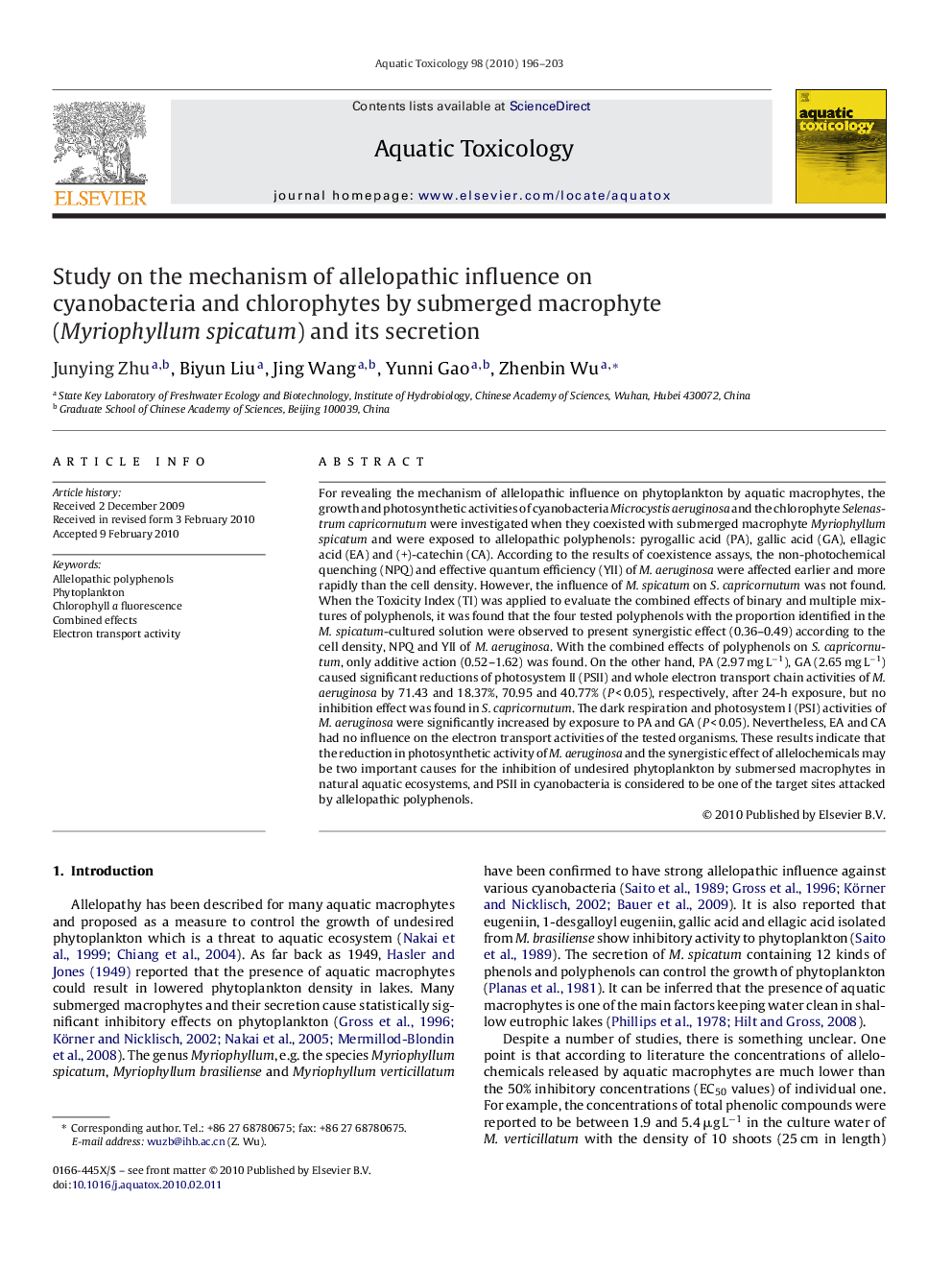| کد مقاله | کد نشریه | سال انتشار | مقاله انگلیسی | نسخه تمام متن |
|---|---|---|---|---|
| 4530409 | 1324701 | 2010 | 8 صفحه PDF | دانلود رایگان |

For revealing the mechanism of allelopathic influence on phytoplankton by aquatic macrophytes, the growth and photosynthetic activities of cyanobacteria Microcystis aeruginosa and the chlorophyte Selenastrum capricornutum were investigated when they coexisted with submerged macrophyte Myriophyllum spicatum and were exposed to allelopathic polyphenols: pyrogallic acid (PA), gallic acid (GA), ellagic acid (EA) and (+)-catechin (CA). According to the results of coexistence assays, the non-photochemical quenching (NPQ) and effective quantum efficiency (YII) of M. aeruginosa were affected earlier and more rapidly than the cell density. However, the influence of M. spicatum on S. capricornutum was not found. When the Toxicity Index (TI) was applied to evaluate the combined effects of binary and multiple mixtures of polyphenols, it was found that the four tested polyphenols with the proportion identified in the M. spicatum-cultured solution were observed to present synergistic effect (0.36–0.49) according to the cell density, NPQ and YII of M. aeruginosa. With the combined effects of polyphenols on S. capricornutum, only additive action (0.52–1.62) was found. On the other hand, PA (2.97 mg L−1), GA (2.65 mg L−1) caused significant reductions of photosystem II (PSII) and whole electron transport chain activities of M. aeruginosa by 71.43 and 18.37%, 70.95 and 40.77% (P < 0.05), respectively, after 24-h exposure, but no inhibition effect was found in S. capricornutum. The dark respiration and photosystem I (PSI) activities of M. aeruginosa were significantly increased by exposure to PA and GA (P < 0.05). Nevertheless, EA and CA had no influence on the electron transport activities of the tested organisms. These results indicate that the reduction in photosynthetic activity of M. aeruginosa and the synergistic effect of allelochemicals may be two important causes for the inhibition of undesired phytoplankton by submersed macrophytes in natural aquatic ecosystems, and PSII in cyanobacteria is considered to be one of the target sites attacked by allelopathic polyphenols.
Journal: Aquatic Toxicology - Volume 98, Issue 2, 10 June 2010, Pages 196–203